Lucy bursts out of the wardrobe, not noticing in her haste that it’s still raining outside and Peter, whom you’ll remember was “it” in hide and seek, can be heard finishing counting to one hundred. “It’s all right!” she calls as she runs down the halls. “I’m back!” To her surprise, Edmund pokes his head out from behind a tapestry and hisses, “Shut up! He’s coming!” Peter does indeed come around the corner and see both of them. (This probably could have been staged a little better since it looks like Edmund had a good couple of seconds to pull his head back in first.)
Peter: You know, I don’t think you two have quite got the idea of this game.
Lucy: Weren’t you all wondering where I was?
Edmund: That’s the point! That was why he was seeking you!
Susan (emerging from her hiding place): Does this mean I win?
Peter: I don’t think Lucy wants to play anymore.
Lucy: I’ve been gone for hours.
You guessed it. No time has passed while she was in Narnia.[1]I mean, you probably didn’t need to guess since this is a famous story. But let’s pretend it’s not.
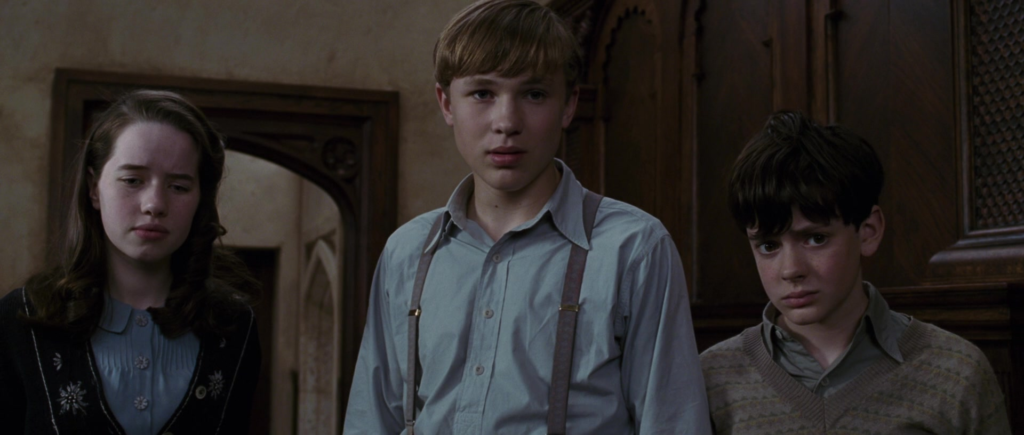
After hearing her story (offscreen), they investigate the wardrobe but when they pull back the coats, there’s nothing but your average, everyday back of a wardrobe. Susan even knocks on it and so does Edmund from the other side. “Lucy, the only wood in here is the back of the wardrobe,” Susan says. “One game at a time, Lu,” says Peter affectionately, “we don’t all have your imagination.” Edmund just rolls his eyes in disgust. While the dialogue is different from that of the book, I love that the movie keeps each siblings having a different reaction to Lucy’s crazy story, Susan’s being more schoolmarmish, Peter’s more indulgent and Edmund’s simply rude. It’s a great way to demonstrate their individual personalities. They’re all about to walk out of the spare room when Lucy protests that she wasn’t imagining. “That’s enough,” says Susan sternly. Mature viewers can tell that her sternness comes from fear for her sister’s sanity, but Lucy thinks Susan is angry at her. “I wouldn’t lie about this,” she cries, aghast. “Well, I believe you,” says Edmund. “Didn’t I tell you about the football field in the bathroom cupboard?” Peter pulls him aside to tell him off.
Peter: Oh, would you just stop? You just have to make everything worse, don’t you?
Edmund: It was just a joke.
Peter: When are you going to learn to grow up?
Edmund: Shut up! You think you’re Dad but you’re not!
Edmund storms out of the room. “Well, that was nicely handled,” says Susan and stalks off herself. (I’m not really sure why she should be mad at Peter in this moment, but the movie wants the scene to be as sad as possible.) Peter turns to a rather small and pathetic looking Lucy. “But it really was there,” she says.[2]And somewhere out there Candace Flynn nods and sighs in sympathy. “Susan’s right, Lucy,” says Peter, “that’s enough.” The scene is a great tearjerker.
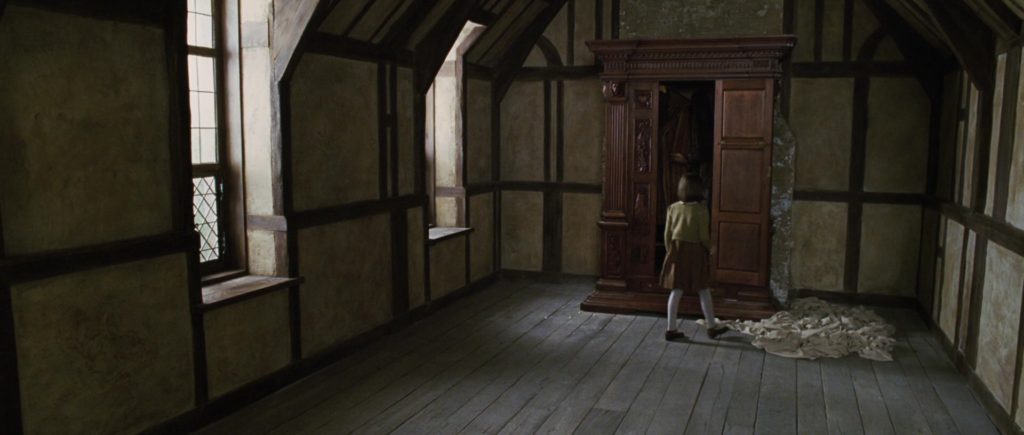
In the book, Peter and Edmund don’t actually have a big fight until after Lucy’s second trip to Narnia. I feel like that made more emotional sense since Edmund’s misbehavior had been building for longer but there’s definitely something to be said for making him as mad at Peter as possible right before the following scene.
We see Lucy lying awake at night, wondering about what happened. Finally, she gets up, pushes aside a pair of bedroom slippers with her feet and takes out a pair of boots from under the bed, a great wordless way of telling us her plans. She makes her way down the hall with a candle. Edmund emerges from the bathroom in time to see her[3]Trivia Time: Reports on early screenings made some fans worried that the audible toilet flush in this moment would be an example of bathroom humor but thankfully in context, it doesn’t come … Continue reading and, grinning, follows her on tiptoe. Because of the adaptation’s compressed timeframe, he hasn’t been mercilessly teasing Lucy about her story for as long as in the book and as a result doesn’t come across as unlikeable, especially since the movie starts off by giving him a sympathetic quality. (He misses his father.) Still, it’s not a completely whitewashed take on the character.
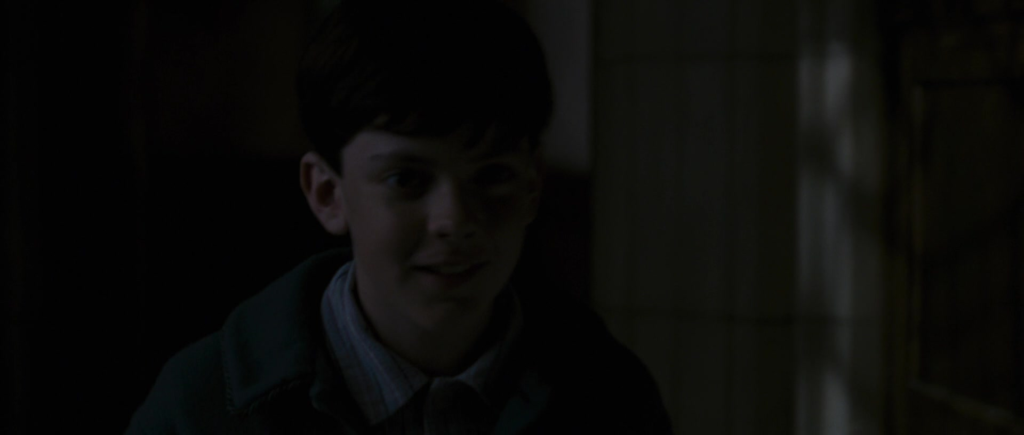
In the spare room, Lucy cautiously approaches the wardrobe and opens the door, scared she’ll find the same thing as last time. Suddenly, a gust of wind from within the wardrobe blows out her candle. The music rises ecstatically as Lucy’s face lights up and she clambers inside. This is fairly different from how the book portrays this scene, but I love it.
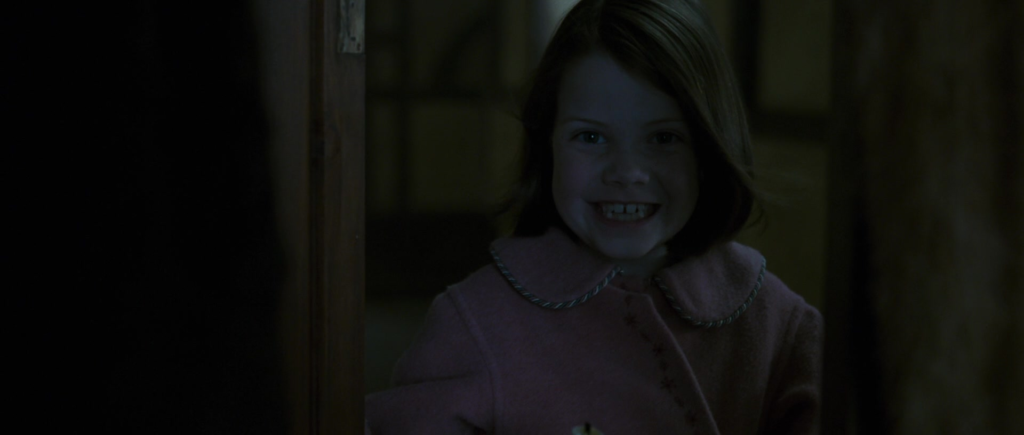
Edmund opens to the door to spare room just in time to see Lucy enter the wardrobe and close the door behind, leaving it open just a crack. He jumps inside, yelling “boo” but gets no response. “I hope you’re not afraid of the dark,” he taunts, closing the door all the way behind him. The book emphasizes the fact that Edmund closes the wardrobe door all the way, making it harder for him get out again, to show that he’s not as mentally superior to Lucy as he believes. Sure enough, he gets lost in all the fur coats and tumbles out on his keister into Narnia. “Lucy? I think I believe you now,” he calls as he wanders the woods. When I first saw the movie, I laughed at that line but also felt it made Edmund more of a caricature than he was in the book. On reflection though, I feel like it was necessary to convey that he dislikes admitting he’s wrong and only does so because he’s afraid of being alone in this strange place, something that might not have registered otherwise. And it is a really funny line.
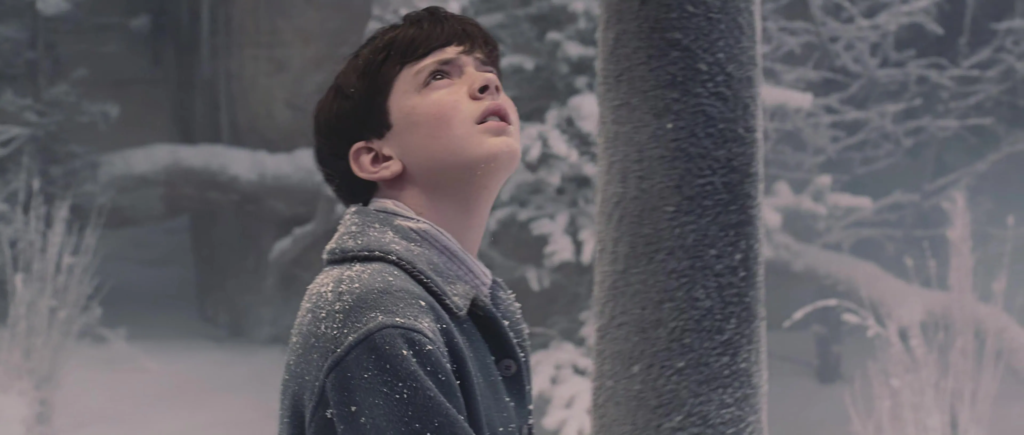
Edmund wanders past the lamppost and hears the sound of sleighbells in the distance. Suddenly a sleigh drawn by white reindeer comes barreling out of the mist, nearly running him over. We can only see who’s seated inside for a brief second.
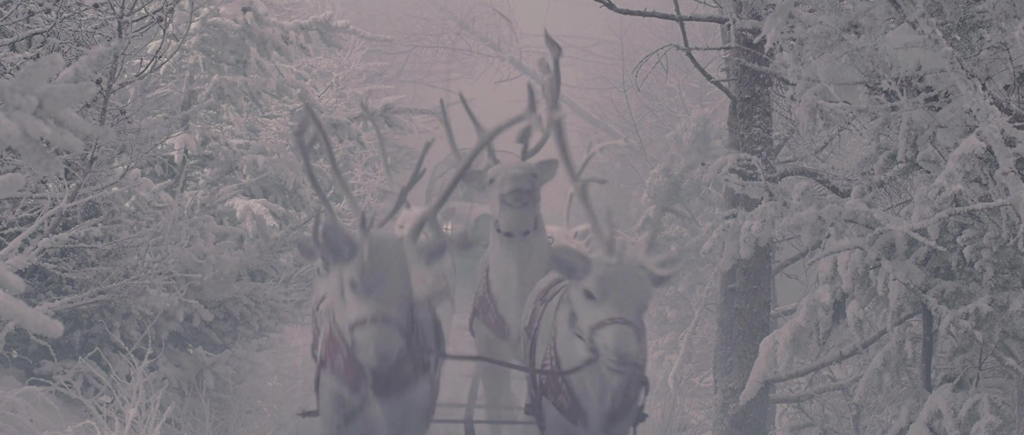
After the sleigh passes Edmund, it stops, and the driver gets out. It’s a dwarf (Kiran Shah) wearing a red cap with tassel but don’t get the idea he’s one of Santa’s elves. The first thing he does is chase after Edmund and pin him to the ground, presumably as punishment for getting in his way.
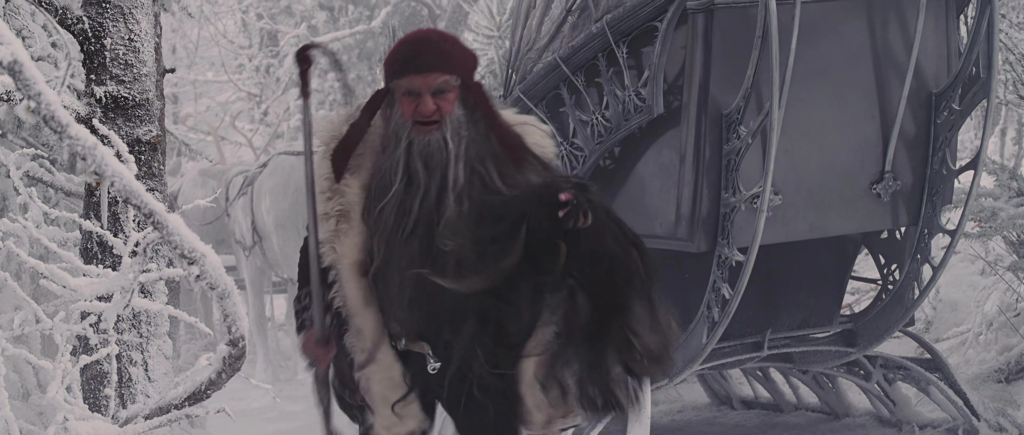
“What is it now, Ginarrbrik?” asks a beautiful but bored sounding voice from the sleigh. “Make him let me go!” cries Edmund. “I didn’t do anything wrong!” “How dare you address the queen of Narnia?” Ginarrbrik snarls. (This dwarf wasn’t given a name in the book by the way. When christening him for the movie, the filmmakers took inspiration from Nikabrik, the name of another evil dwarf from Prince Caspian.) “I didn’t know,” says Edmund. “You will know her better hereafter,” says Ginarrbrik, raising his knife. “Wait!” the voice suddenly cries urgently. The dwarf allows Edmund to sit up and see the inhumanly tall woman (Tilda Swinton) who has risen from the sleigh.
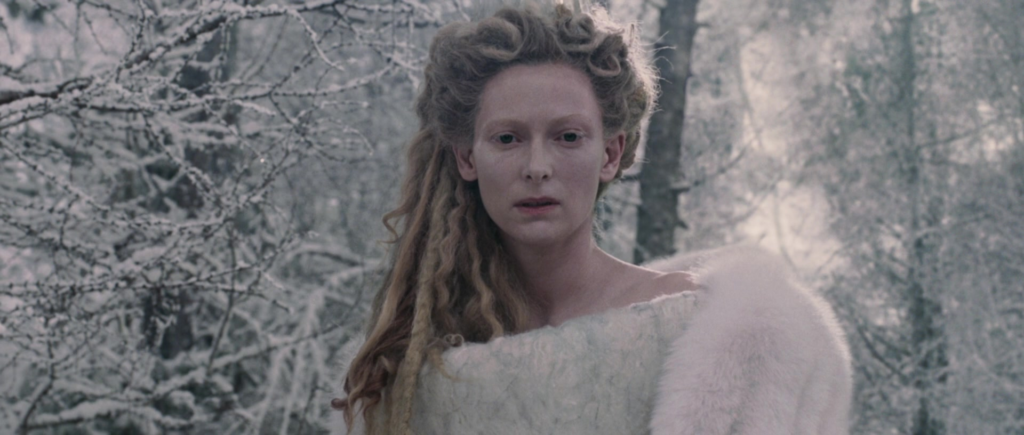
OK, I love most of the makeup work in this movie, but I’ve never loved the look of this White Witch. It doesn’t look as bad in this scene as in some others, but her skin doesn’t look so much white (“Not merely pale but white,” the book stresses, “like snow or paper or icing sugar”) as gray and the effect is less beautiful than grotesque. Her wig looks downright terrible and if they really couldn’t use the actress’s real hair, why not give her either dark hair to contrast with the white skin and polar bear fur coat or white hair to match them? Blonde hair just doesn’t go well with the rest of her color scheme. I can only assume they wanted her to have dreadlocks in the belief that they would suggest icicles. Her crown by the way is made of actual icicles.[4]In-universe, I mean. I assume Tilda Swinton did not wear actual icicles when filming this. That wouldn’t have been practical. This differs from her golden crown in the book but I see the symbolic appeal of her crown melting as her spell on Narnia break and spring returns. Whatever problems I have with the Witch’s appearance, Tilda Swinton delivers in spades, bringing a very powerful screen presence to the role. She’s not exactly the White Witch from the book, being chillier[5]Forgive me for the obvious and irresistible pun., more aloof and emotionally undemonstrative but she makes for a great villain in her own right. The Witch in the 1988 miniseries of The Lion, the Witch and the Wardrobe was performed in a very broad, pantomime villain way and in the 1979 cartoon, seemingly the only direction the voice actress received was to scream louder.[6]I regret to say that since director Bill Melendez did a lot of great work for the Peanuts and Garfield franchises. I prefer Swinton’s White Witch to those though if I were directing my own adaptation, I’d aim for a happy medium between the two takes on the character as that’s the impression I get from the book.
Witch: What is your name, Son of Adam?
Edmund: Edmund
Witch: And how, Edmund, did you come to enter my dominion?
Edmund: I’m not sure. I was just following my sister.
Witch: Your sister? How many of you are there?
Edmund: Four. Lucy’s the only one that’s been here. She said she met some faun called Tumnus. Peter and Susan didn’t believe her. I didn’t either.
Witch: Edmund, you look so cold. Come and sit with me.
In the book, Edmund only tells the Witch all the information about his siblings and Tumnus after he’s grown comfortable with her. I feel like that makes more sense than the way he just blurts everything out right away here. Actually, this whole scene is staged quite differently from the book though some of the initial dialogue is similar. There it was the Witch who ordered the dwarf to stop the sleigh and angrily interrogated Edmund. The movie avoids having her come across as obviously evil right off the bat though I suspect the fact that she employs such a violent chauffeur tips off many viewers. (I suspect they also wanted to add more action to the story by having the dwarf chase down Edmund and almost kill him.) I hesitate to say this improves on the book since I never feel like the scene needs improvement when I read it. But I never wish the movie had stuck closer to the text when I watch this scene. (Well, not that part of it anyway.) The Witch initially looks and sounds quite neutral when she questions Edmund. Then when she invites him to sit with her for warmth, she sounds downright friendly. But when she turns her face away, we briefly see how frightened she really is by Edmund’s appearance in her realm and what he’s told her.
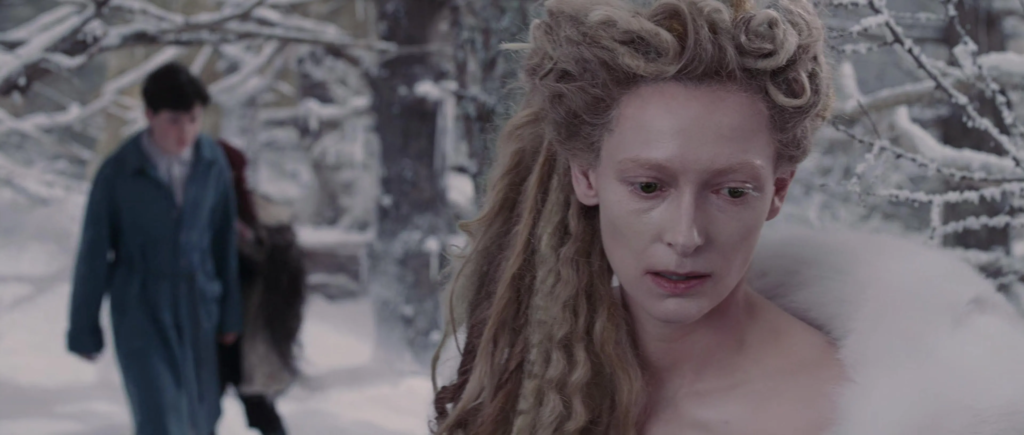
The Witch wraps a nervous Edmund in her mantle and offers him something warm to drink. She produces a little silver bottle and lets a drop of it fall on the ground, magically creating a goblet of refreshment. According to the book, “Edmund saw the drop for a second in mid-air, shining like a diamond. But the moment it touched the snow there was a hissing sound and there stood a jeweled cup full of something that steamed.” This obviously brings to mind a stage effect with the cup appearing in a puff of smoke, which is unusual for C. S. Lewis who typically used the medium of literature for things that would have been impossible (in his day anyway) for television, movies and the stage. The adaptation arguably improves on the description by having the goblet slowly materialize before our eyes and fill up with liquid.
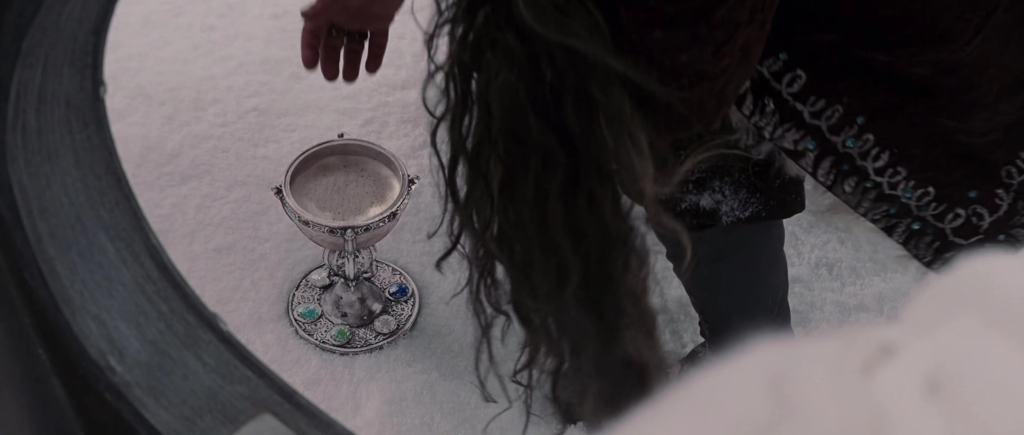
Ginarrbrik hands it to Edmund with grudging respect. The Witch tells him she can make anything he’d like. “Can you make me taller?” asks Edmund. That’s a great line original to the movie as it reinforces the character’s resentment of his older siblings. The Witch clarifies that she can make anything he’d like to eat, and Edmund asks for Turkish Delight. She creates a box of it which the dwarf hands to Edmund. Ginarrbrik then throws away the cup (even though it looks like Edmund barely drank any.) It turns into snow as soon as it hits a tree. This could imply that anything the Witch creates is an illusion and not real refreshment just like her false kindness. Or, given the story’s Christian themes, in its original form anyway, it could imply that only God has the power to create, and the forces of evil can only imitate His creation. Or it could be the filmmakers just thought it looked cool.
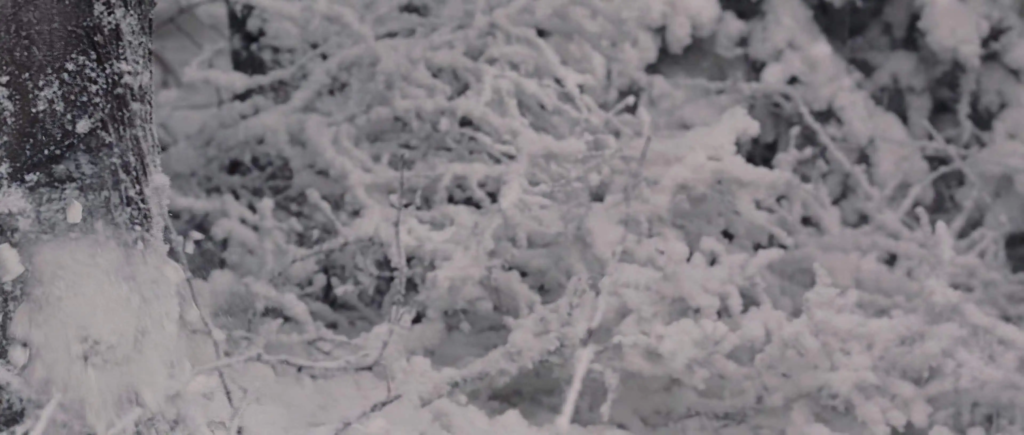
The Witch tells Edmund she’d love to meet his family. “Why? They’re nothing special,” Edmund grouses with his mouth full. “Oh, I’m sure they’re not nearly as delightful as you are,” says the Witch. Hilariously, as she says this, she takes Ginarrbrik’s cap from him and uses it to wipe Edmund’s sticky face, much to the dwarf’s dismay.
Witch: But you see, Edmund, I have no children of my own and you are exactly the sort of boy who I can see becoming prince of Narnia. Maybe even king.
Edmund: Really?
Witch: Of course, you’d have to bring your family.
Edmund (disappointed): Oh. Do you mean Peter would be king too?
Witch: No! No, no. But a king needs servants.
Edmund: I guess I could bring them.
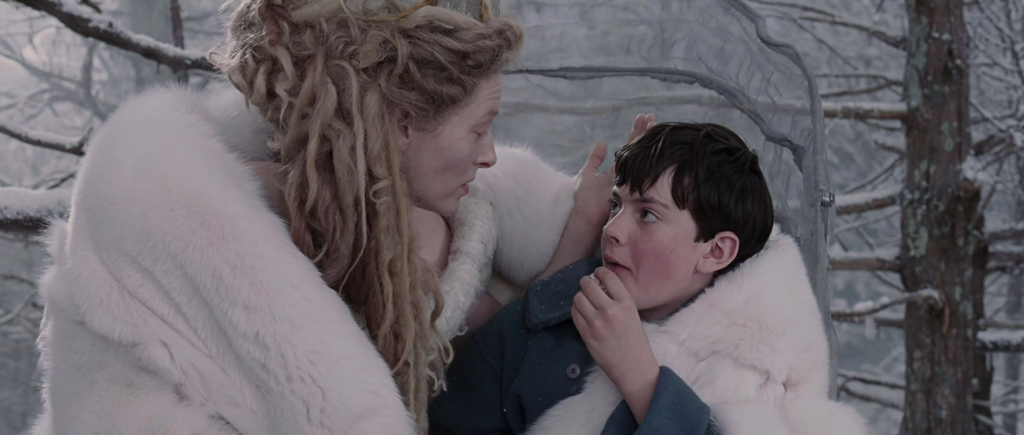
In the book, the Witch says she’ll make Edmund’s brother and sisters lesser nobles under him. The movie makes her playing on his pride less subtle with the whole servant thing but I actually think making a movie version less subtle than a book is fine sometimes, even necessary. I don’t think as much while I watch as I do while I read so there’s something to be said for clearly spelling out some things. To Edmund’s disappointment, the Witch takes the box of Turkish Delight from him and gives it to Ginarrbrik who happily finishes off its content. Some fans of the book have objected to this, feeling it contradicts what Lewis wrote about the enchanted Turkish Delight, “that anyone who had once tasted it would want more and more of it, and would even, if they were allowed, go on eating it till they killed themselves.” I don’t really see how it contradicts it though. Maybe enchanted snacks are also how the Witch keeps Ginarrbrik enslaved to her. While the movie, not having a narrator, never specifies that the Turkish Delight is enchanted/addictive, that still seems to be the implication because otherwise I’m really not sure what it’s purpose in the story could be. Later in the book, a character tells Peter, Susan and Lucy that Edmund has “the look of one who has been with the Witch and eaten her food.” If I were adapting the story and couldn’t use a narrator, I would likely include that line and then expand on it, having him explain just what that means. Interestingly, most other adaptations refrain from spelling out the Turkish Delight’s exact effect on eaters too, perhaps out of concern that it would give the impression that Edmund’s misdeeds were out of his control.
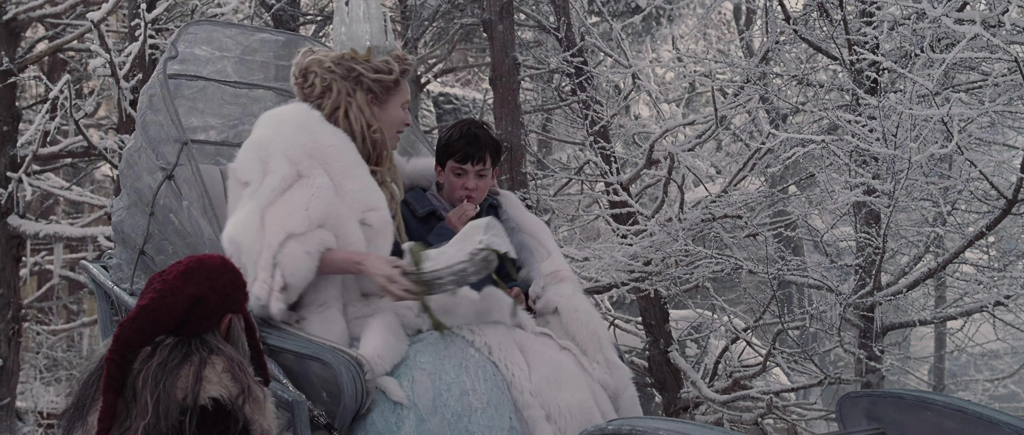
The Witch points out two hills to Edmund, telling him her house is between them. “You’d love it there,” she says as she gently pushes him out of the sleigh, “it has whole rooms simply stuffed with Turkish Delight.” In the book, she also tells him not to tell his siblings about her before he brings them to the house because “If your sister has met one of the Fauns, she may have heard strange stories about me — nasty stories that might make her afraid to come to me. Fauns will say anything, you know.” I wish this could have been kept as it makes the Witch smarter and, while it doesn’t exactly make Edmund smarter, it does show more how he’s able to delude himself into trusting her, helping us to-well, maybe not respect him but understand him. Edmund asks for some more Turkish Delight for the road. “No!” snaps the Witch before recovering her composure and telling him he doesn’t want to ruin his appetite. “Besides, you and I are going to be seeing each other again very soon, aren’t we?” she adds pointedly.[7]This moment of the Witch losing her cool (sorry about making another obvious ice/snow pun) and then backpedaling is something of a tradition in adaptations of The Lion, the Witch and the Wardrobe but … Continue reading “I hope so, Your Majesty,” says Edmund. “Until then, dear one,” says the Witch, “I’m going to miss you.” This whole scene is just as great in its own way as the scene with Lucy and Tumnus was in its. It does a brilliant job of making the Witch seem mysterious and ominous without making her too intimidating just yet. That’s going to come later.[8]In the book, I’d say the Witch is supposed to be intimidating at this point, but I enjoy what the movie does here in its own right. The music is also perfect. It’s not the sort of thing you’re going to want to listen to outside the context of watching the film, but it really adds to eerie feeling that something is off without yelling at viewers to run away in fear.
The Witch rides away in her sleigh, leaving Edmund staring after it. He hears a familiar voice calling him from behind. It’s Lucy, who runs up and hugs him, delighted to have someone else who’ll back up her story now. Edmund pries her fingers off. “Where have you been?” he grumbles, wiping sugar off his mouth. “With Mr. Tumnus,” explains Lucy. “He’s fine. The White Witch hasn’t found out anything about him meeting me.” Edmund looks wary at this. “She calls herself the queen of Narnia,” Lucy says, “but she really isn’t.” We actually haven’t heard Tumnus mention that little fact about the Witch to Lucy in this movie, unlike in the book, so I guess we can just assume it just came up sometime during her second visit. Lucy also told Edmund a lot more about the Witch at this point in the text and got into more reasons why she was evil, which I think would have made more storytelling sense. I guess her tone though when she says the Witch isn’t really the queen is enough to convey the idea that she’s really bad. Edmund certainly seems to get the idea, judging by his facial expression.
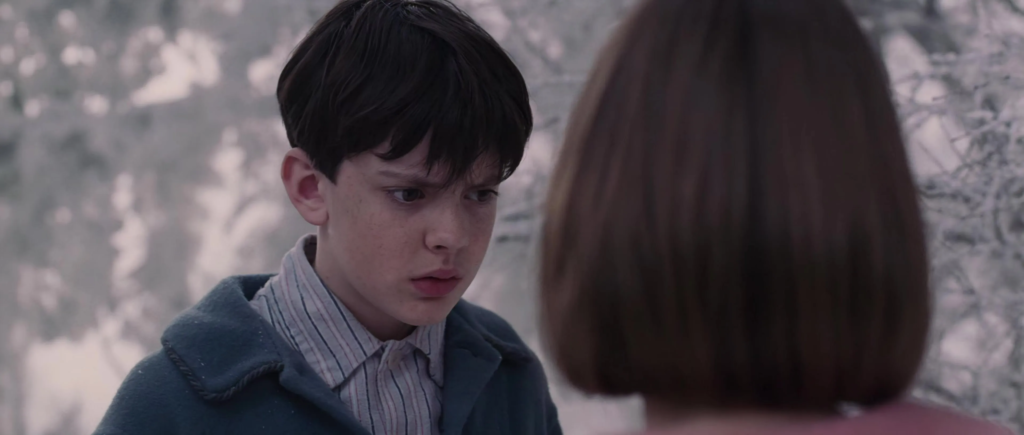
“Are you all right? You do look awful,” says Lucy. “Well, what do you expect?” Edmund snaps. “I mean, it’s freezing! How do we get out of here?” Lucy leads him away. We then cut to her jumping on Peter in his bed in the middle of the night with Edmund and Susan right behind her. (I mean, they’re entering Peter’s bedroom behind her. They’re not following her lead with the jumping thing.)
Lucy: Peter, Peter, wake up! Peter, wake up, it’s there, it’s really there!
Peter: Lucy, what are you talking about?
Lucy: Narnia! It’s all in the wardrobe like I told you!
Susan: Oh, you’ve just been dreaming, Lucy.
Lucy: But I haven’t! I saw Mr. Tumnus again and this time Edmund went too!
At once, everyone’s eyes are on Ed. “You saw the faun?” asks Peter skeptically. Looking like the proverbial deer in the headlights, Edmund shakes his head. “Well, he didn’t actually go there with me,” begins Lucy, “He…” Her voice trails off. “What were you doing, Edmund?” In the book’s words, Edmund “decided all at once to do the meanest and most spiteful thing he could think of. He decided to let Lucy down.”
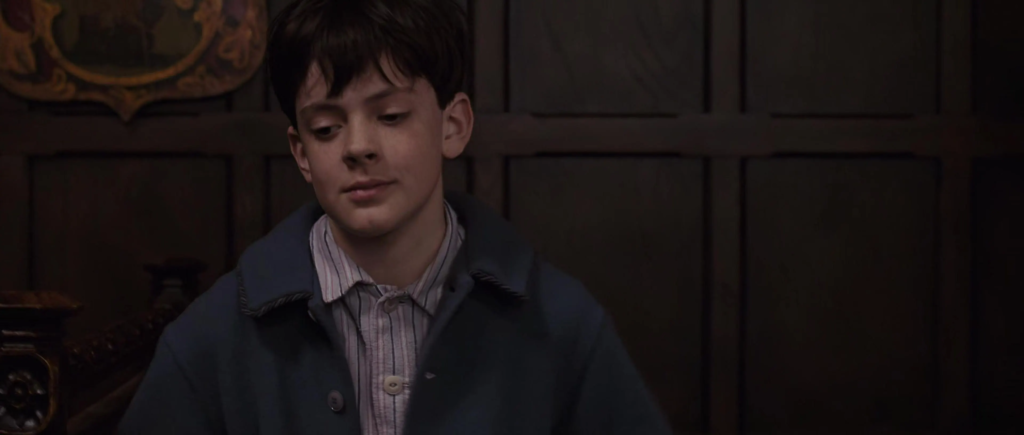
“I was just playing along,” Edmund says. “I’m sorry for Lucy. I shouldn’t have encouraged her but you know what little children are like these days. They just don’t know when to stop pretending.”
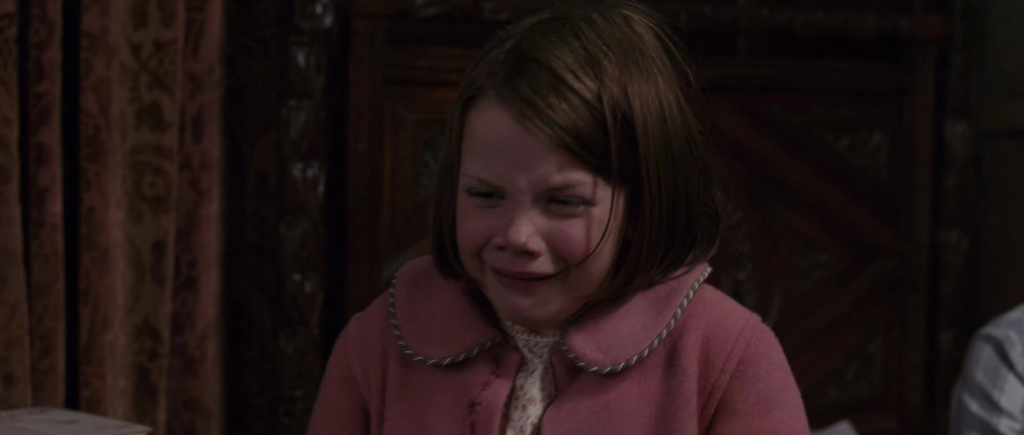
Betrayed, Lucy runs out of the room, crying. Susan and Peter run after her. As he passes Edmund, Peter roughly shoves him onto a bed, which I’m sure everyone watching enjoys.
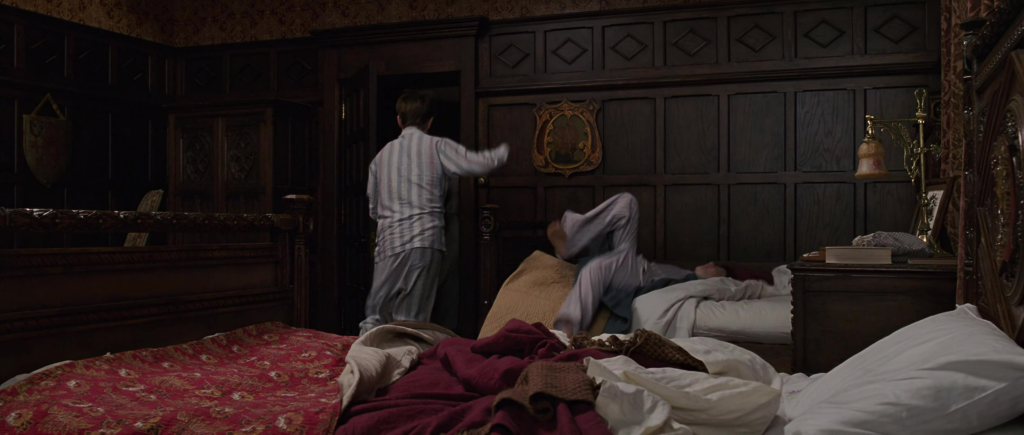
Lucy runs down the hall and right into…the professor!
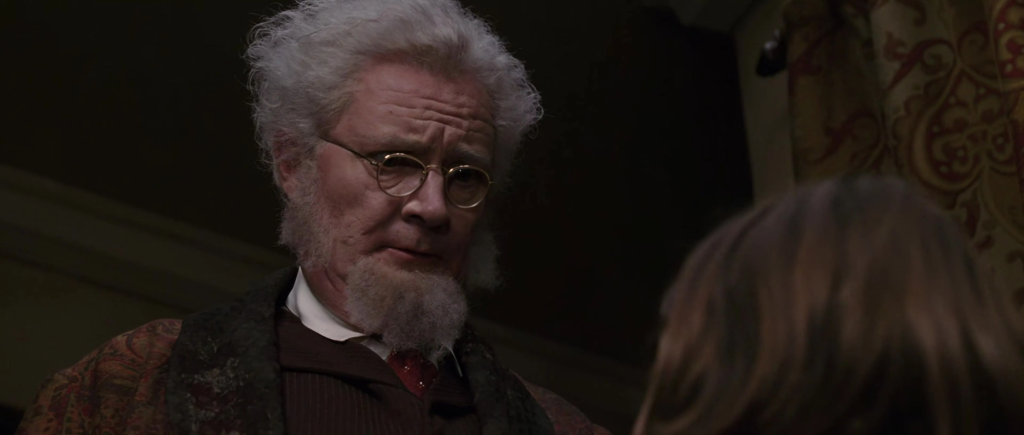
Next Week: Lucy Has a Surprising Ally but Can She Convince Peter and Susan of her Honesty?
References
| ↑1 | I mean, you probably didn’t need to guess since this is a famous story. But let’s pretend it’s not. |
|---|---|
| ↑2 | And somewhere out there Candace Flynn nods and sighs in sympathy. |
| ↑3 | Trivia Time: Reports on early screenings made some fans worried that the audible toilet flush in this moment would be an example of bathroom humor but thankfully in context, it doesn’t come across as humorous, just something to show why Edmund is up late. There probably wasn’t music during the early screenings, making the sudden flushing noise more potentially funny. |
| ↑4 | In-universe, I mean. I assume Tilda Swinton did not wear actual icicles when filming this. That wouldn’t have been practical. |
| ↑5 | Forgive me for the obvious and irresistible pun. |
| ↑6 | I regret to say that since director Bill Melendez did a lot of great work for the Peanuts and Garfield franchises. |
| ↑7 | This moment of the Witch losing her cool (sorry about making another obvious ice/snow pun) and then backpedaling is something of a tradition in adaptations of The Lion, the Witch and the Wardrobe but it doesn’t actually have a basis in the text. Lewis describes her as speaking “with a laugh” at this point. |
| ↑8 | In the book, I’d say the Witch is supposed to be intimidating at this point, but I enjoy what the movie does here in its own right. |
